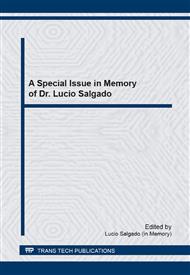p.380
p.386
p.395
p.403
p.409
p.415
p.422
p.429
p.435
Elaboration of Reservoir Simulation Software for Academic Purpose
Abstract:
Petroleum engineering is advancing to exploit deeper and more unstable formations. Therefore, the knowledge of how the reservoir behaves with production has to increase significantly. That is why in the study of reservoir engineering simulation is necessary: to understand how the reservoir behaves without actually having a producing well to perform monitoring on. Brazil, as one of the leading entrepreneurs in non-traditional wells, needs engineers who have the know-how in reservoir engineering. A fluid flow simulator has been developed with an input of the geological information of the formation in which the reservoir is, the desired production, how many and what types of wells (production or injection) are to be installed and how long will be the horizon of study. The simulator is designed to solve the derived multi-linear system of differential equations thru numerical analysis. The output is point-to-point graphics of pressure, fluid flow and loss of pressure due to production. These outputs have direct application for academic purposes, showing to first-timers what is the optimal project of production for a reservoir, where the wells should be located to give maximum production with minimum effect to internal pressure, this way increasing the lifespan of the reservoir itself.
Info:
Periodical:
Pages:
409-414
Citation:
Online since:
September 2014
Keywords:
Price:
Сopyright:
© 2015 Trans Tech Publications Ltd. All Rights Reserved
Share:
Citation:


